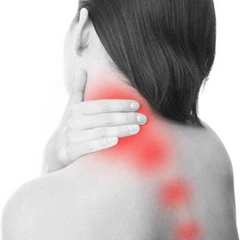Introduction
Heel tingling, pain that worsens after prolonged walking, and even affects daily commutes and exercise-these are typical symptoms of plantar fasciitis. Plantar fasciitis is the most common cause of heel pain; it is an inflammation of the plantar fascia caused by repetitive strain injury. While traditional treatments such as rest, stretching, orthoses, or steroid injections can provide short-term relief, many patients still experience persistent pain. Extracorporeal shock wave therapy (ESWT), as a non-invasive and effective treatment, can provide faster pain relief and promote healing of chronic plantar fasciitis. This article will introduce the mechanism of action of ESWT, its comparative advantages with traditional therapies, and a general treatment procedure.

How Shockwave Therapy Relieves and Treats Plantar Fasciitis
Extracorporeal Shockwave Therapy (ESWT) is a non-invasive physical therapy technique that uses external devices to generate high-frequency, high-energy acoustic pressure waves, precisely targeting the damaged areas of the plantar fascia. Its treatment mechanism mainly manifests in the following aspects:
Stimulating Micro-damage Repair
The shockwaves apply precise and controllable energy to the damaged area of the plantar fascia, creating gentle mechanical micro-damage. This directly activates the body's natural repair pathways, promoting fibroblast proliferation and the synthesis of new collagen, making the loose and strained plantar fascia strong and elastic again. It structurally repairs repeatedly damaged fascial tissue, thoroughly addressing the root cause of heel pain.
01
Promoting Angiogenesis
The high-energy pressure waves of ESWT stimulate the plantar fascia and surrounding tissues to produce vascular endothelial growth factor, accelerating the formation and reconstruction of the capillary network. Newly formed capillaries significantly improve blood flow to the affected area, delivering sufficient oxygen and nutrients to the fascia tissue, which is chronically strained and undernourished. Simultaneously, they efficiently remove metabolic waste, improving tissue metabolism and promoting inflammation resolution and pain relief.
02
Reducing Inflammatory Response
For the chronic aseptic inflammation of plantar fasciitis, shockwave therapy precisely regulates the balance of inflammatory mediators. On the one hand, it reduces the release of pro-inflammatory factors such as tumor necrosis factor; on the other hand, it enhances the activity of anti-inflammatory factors, inhibiting the continued development of the inflammatory response.
03
Regulating Pain Transmission
ESWT directly reduces heel pain through two pathways: first, it acts on the sensory nerve fibers around the plantar fascia, reducing their excitability and conduction speed, blocking the transmission of pain signals to the brain; second, it stimulates the body to release natural analgesics such as endorphins, creating a long-lasting analgesic effect.
04
Shockwave Therapy vs Traditional Treatments
Compared to traditional treatments for plantar fasciitis, shockwave therapy offers significant advantages in terms of safety, duration of efficacy, and overall health, making it particularly suitable for patients with chronic plantar fasciitis. The table below shows a comparison between shockwave therapy and common treatments for plantar fasciitis.

|
Treatment Method |
Mechanism / Principle |
Effectiveness |
Recovery Time |
Risks / Side Effects |
Notes |
|
Shockwave Therapy (ESWT) |
Acoustic waves stimulate the plantar fascia, promoting healing and reducing pain |
High, especially for chronic cases |
Pain relief typically starts within 2–12 weeks |
Mild short-term redness or bruising; serious complications are rare |
Non-invasive, suitable for patients who did not respond to conservative treatment |
|
Massage and Stretching |
Relieves tension in fascia and tendons through targeted exercises |
Moderate, requires long-term adherence |
Several months |
Minimal side effects, but effect may be limited |
Helps gradually improve flexibility and reduce stress on the fascia |
|
Orthotics / Supportive Insoles |
Adjusts arch support and redistributes pressure across the foot |
Moderate |
Several weeks to months |
Not suitable for all patients |
Can reduce plantar fascia strain and prevent symptom worsening |
|
Steroid Injections |
Reduces inflammation and pain in the fascia |
High short-term relief, may recur long-term |
Relief often within days |
Potential tissue damage, risk of symptom recurrence |
Fast-acting, but repeated injections can cause complications |
|
Surgical Release / Fasciotomy |
Partial removal or release of fascia tissue |
High, only for refractory cases |
Several weeks to months |
Surgical risks, longer recovery period |
Considered last-resort treatment for severe, chronic plantar fasciitis |
Treatment Process and Precautions of Shockwave Therapy
Understanding the treatment process and precautions can help patients better prepare for ESWT and achieve the best results.
• Initial Assessment: A physician will assess heel pain, foot anatomy, and previous treatments.
• Treatment Plan: Shockwave therapy typically requires 1–5 sessions, spaced 1–2 weeks apart, with each session lasting 15–30 minutes.
• During Treatment: Patients may experience mild tingling or discomfort, which is a normal reaction.
• Post-Treatment Care: Gentle foot stretching is necessary. Avoid high-intensity exercise for several days after treatment. Wearing supportive footwear is recommended to reduce stress on the plantar fascia.
• Precautions: Not recommended for patients with bleeding disorders, local infections, tumors, or pregnant women.
• Follow-Up: Assess pain and functional improvement 2–12 weeks after treatment.
Conclusion
Extracorporeal shock wave therapy (ESWT) offers a non-invasive and effective treatment option for plantar fasciitis, particularly suitable for patients who do not respond to conventional treatments. By stimulating tissue repair, relieving pain, and restoring foot function, ESWT helps patients return to daily activities more quickly.
Newangie offers FDA-approved and CE-certified shockwave therapy devices to help patients quickly regain a pain-free walking experience. Contact us for device information.











